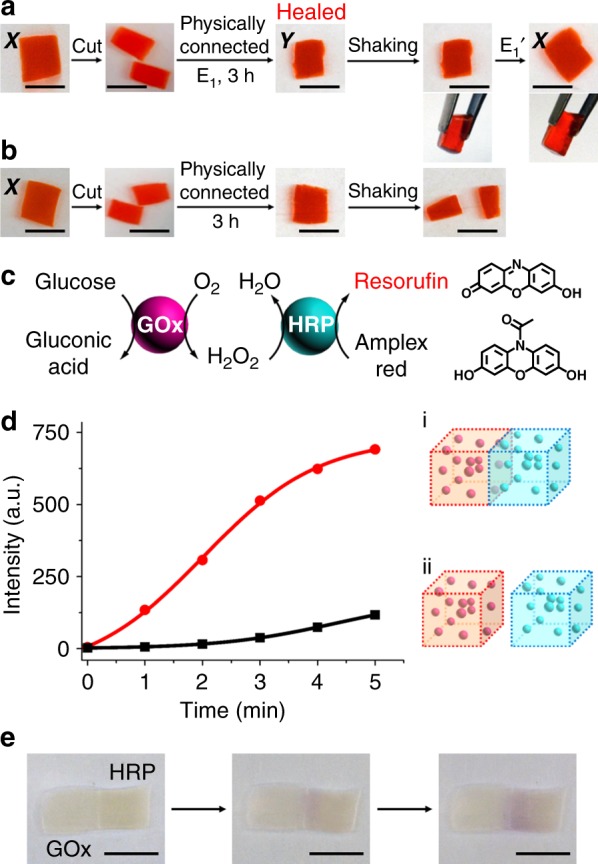Fig. 4.

Self-healing of the CDN hydrogel matrices for a biocatalytic cascade. a Self-healing of CDN hydrogel X. The hydrogel was cut into two pieces which were physically interconnected. The E1-induced transition of hydrogel X to the stiffer CDN hydrogel Y, yielded the healed hydrogel Y. Treatment of the healed hydrogel Y with E1’ regenerated the healed hydrogel X. b A control experiment in the absence of trigger E1 reveals that the E1-induced transition of hydrogel X to Y is mandatory to yield the healed hydrogel matrix. c Operation of a bi-enzyme cascade consisting of glucose oxidase (GOx) coupled to horseradish peroxidase (HRP). The aerobic oxidation of glucose yields gluconic acid and H2O2. The generated H2O2 acts as a substrate for HRP that catalyzes the oxidation of Amplex Red to Resorufin. The latter product provides the fluorescence readout signal for the biocatalytic cascade. d Time-dependent fluorescence changes generated upon: (i) The operation of the GOx/HRP bi-enzyme cascade in a healed matrix composed of a GOx-loaded hydrogel matrix linked to a HRP-loaded hydrogel matrix; (ii) The operation of the bi-enzyme cascade in separated GOx-loaded hydrogel and HRP-loaded hydrogel matrices. e The color intensity changes of Resorufin generated by the bi-enzyme cascade reaction at the boundary of the healed hydrogel matrix. Scale bars in all images correspond to 0.5 cm
